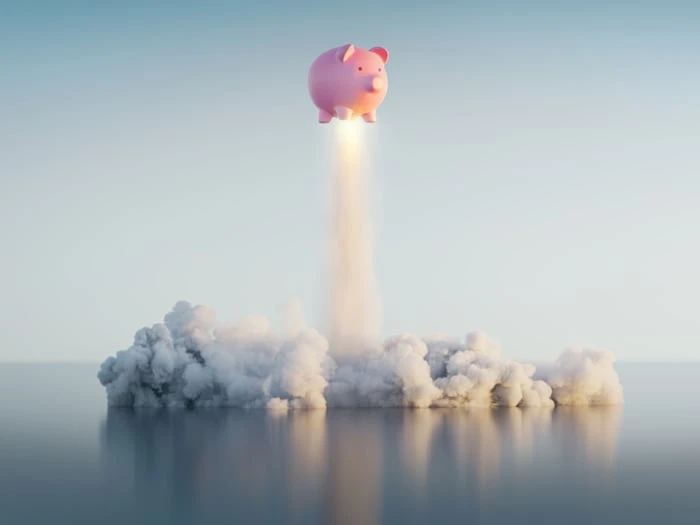Rocket Lab USA, known for developing the Electron orbital rocket, entered the public market three years ago through a merger with a special purpose acquisition company (SPAC). Initially, the stock of the merged entity opened at $11.58 and quickly climbed to a peak of $20.72 within two weeks. However, it has since fallen below $7 per share.
Similar to many companies that went public via SPACs, Rocket Lab set ambitious goals in its pre-merger investor presentation. When it failed to meet those projections, its stock suffered. The situation was further worsened by rising interest rates, which negatively impacted its valuations.
Is there potential for this currently undervalued space stock to soar again in the coming three years?

How does Rocket Lab USA generate revenue?
Rocket Lab was established in New Zealand in 2006 and achieved the milestone of becoming the first private company in the Southern Hemisphere to reach space with the launch of its Ātea-1 suborbital rocket in 2008. The company moved its headquarters to California in 2013.
Since its inaugural launch in 2017, Rocket Lab has launched 52 Electron rockets. In 2020, it introduced its Photon satellite bus and has deployed 192 satellites to date. The company operates three dedicated launch pads and caters to a diverse clientele, including NASA, the U.S. Space Force, the Swedish National Space Agency, Capella Space, and BlackSky.
Although Rocket Lab might appear akin to SpaceX, which also manufactures partially reusable rockets, the two companies target different markets. Rocket Lab’s Electron rocket can transport about 250 kilograms of cargo into space, whereas SpaceX’s Falcon rocket can carry up to 10 times that amount. Rocket Lab anticipates that its forthcoming rocket, Neutron, will handle payloads of 15,000 kilograms when it is launched in 2025.
What is the growth trajectory for Rocket Lab?
In its pre-merger presentation, Rocket Lab anticipated a compound annual growth rate (CAGR) of 97% in revenue, rising from $35 million in 2020 to $267 million by 2023. Ultimately, its revenue grew at a slightly lower three-year CAGR of 91%, reaching $245 million.
Rocket Lab continues to expand at a robust pace. In 2021, it conducted six Electron missions, increased to nine in 2022, and ten in 2023. By the first half of 2024, it had already secured 17 new launch contracts. Additionally, its adjusted gross margin improved from a negative 29% in 2021 to a positive 28% in 2023, largely due to the growth of its higher-margin space systems unit, which helped reduce reliance on its lower-margin launch services unit.
Despite these promising growth figures, the company’s adjusted earnings before interest, taxes, depreciation, and amortization (EBITDA) fell significantly short of initial forecasts. Initially, it projected achieving a positive adjusted EBITDA margin of 10% by 2023, but the actual result was a negative 37%.
Looking ahead to 2023-2026, analysts forecast a revenue CAGR of 54%, reaching $887 million. However, they do not anticipate a positive adjusted EBITDA until 2026, suggesting potential issues with the sustainability of its business model.
Nevertheless, Rocket Lab is not on the brink of bankruptcy. In its latest quarter, it reported holding $497 million in cash, cash equivalents, and marketable securities, alongside a manageable debt-to-equity ratio of 1.6. Its share count has only increased by about 10% over the past three years, indicating minimal dilution of investor shares.
What is the outlook for Rocket Lab’s stock over the next three years?
With an enterprise value of $3.7 billion, Rocket Lab’s stock remains reasonably priced at 6 times next year’s sales. However, it may face increased competition from SpaceX and larger aerospace entities like Boeing as the private space race intensifies. This competitive pressure could hinder its ability to scale its operations and control expenses.
If Rocket Lab continues to secure new contracts, execute more successful launches, expand its rocket offerings, and acquire additional space-focused startups, its stock could stabilize and potentially rise significantly over the next three years.
That being said, it remains a highly speculative stock that is unlikely to gain significant investor interest until interest rates decrease and the broader economic environment becomes more favorable. Investors should be aware that the stock could experience a substantial decline before any potential doubling in value, but it also holds the possibility of delivering substantial gains for those willing to endure short-term volatility.
Don’t miss this second chance at a potentially lucrative opportunity
Ever feel like you missed the boat on investing in top-performing stocks? You’ll want to pay attention to this.
On rare occasions, our expert team of analysts issues a “Double Down” stock recommendation for companies they believe are primed for significant growth. If you’re concerned about missing your chance to invest, now is the ideal time to get in before it’s too late. The numbers are compelling:
Nvidia: If you invested $1,000 when we doubled down in 2009, you’d have $308,807!*
Apple: If you invested $1,000 when we doubled down in 2008, you’d have $42,091!*
Netflix: If you invested $1,000 when we doubled down in 2004, you’d have $375,918!*
Currently, we’re issuing “Double Down” alerts for three remarkable companies, and such opportunities may not present themselves again soon.
See 3 “Double Down” stocks ›
*Stock Advisor returns as of 09/15/2024




